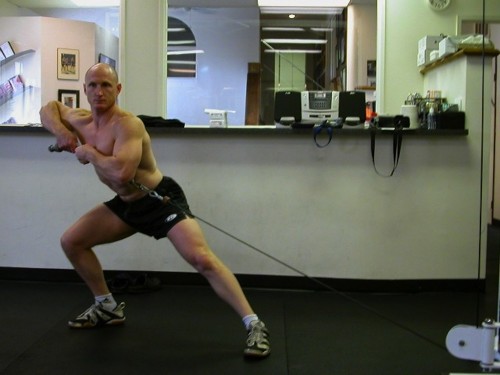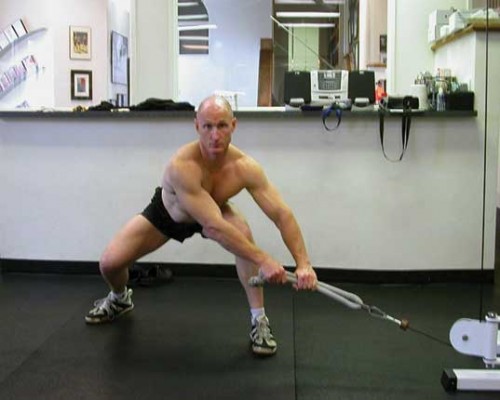Good Friday to You!
I had a very intensely busy and somewhat challenging day yesterday!but that’s part of life ah!
It’s close to time for me to hit the road again so I’ve got new lecture preparations and event preparations coming out my ears at the moment.
Though my day was much more stressful than I’d have preferred it to have been, the stress drained away breath by breath as I did my tai-chi last night.
I took the day off of exercise yesterday to let my body rest and will most likely just relax and get exercise by doing tai-chi, working with stones, or walking in the hills behind my house today.
To meet my deadlines, I’ll have to work some over the weekend, but I’ll do a good job resting today so it doesn’t feel to arduous.
I actually have fun sometimes when I’m working on the weekend because there’s no one around to pester or distract me and I get into a peaceful place where I can create out of joy in instead of feeling like I have to.
After I finish writing this blog, Rory and I are headed to Encinitas for a good long massage followed by a steam.
Then we will head to the house and relax into some art and good music.
We are both fasting through the day until dinnertime to give our organs some rest and a chance to catch up on repairs and cleaning.
By the time dinnertime rolls around, I’ll be ready to reincarnate some beautiful creatures and turn them into a healthy human being ☺.
THE LATERAL LUNGE-PULL
I developed the Lateral Lunge-Pull exercise many years ago. I was doing a lot of orthopedic rehabilitation for injured firemen for several years.
To better understand how to best condition them, I performed a needs analysis (See my correspondence course titled, “Advanced Program Design” to learn how to perform a needs analysis).
In my process of studying firemen, I watched training videos provided by the San Diego fire department.
Next, I went to a fire brigade re-entry test; whenever a fireman is injured, or when new firemen are coming in, they have to go through quite a physical test.
At the time, I was rehabilitating a fire Captain from a serious neck injury.
When I got to the test site, I was pretty impressed with the testing they have to go through. It included a variety of events, much like a circuit workout.
They have to climb ladders several stories high, carry a dummy body down the ladder, drag charged fire hoses, and a variety of such events, which are timed.
After I got a birds-eye view of the exact biomechanical and physical demands firemen must be ready for, I began developing specific conditioning methods for firemen.
The Lateral Lunge-Pull is one of my inventions that I use with them because the biomechanics and characteristics of the exercise carryover directly to pulling heavy hoses, ropes or cables.
I know the movement pattern well because when I was working in logging camps as a young man, we use to have to pull very heavy cables for long periods.
You learn good body mechanics, or you get injured!
As you can see in the photo of the start position above, the stance is split, but stable.
The spine is long, but not held in too rigid a lordosis (lumbar curve).
If someone has a spinal pathology, such as a disc injury, then I tape their spine into an optimal position so they know when they are rounding their back dangerously.
If the spine is functional, I want a little rounding of the back to work the muscles through a full range of motion, and to condition the posterior ligamentous system of the spine.
Pay close attention to the fact that I’m using rope handles with a double-overhand grip.
These components of the exercise are critical in order to create the right conditioning effect and the correct biomechanics to allow optimal functional transfer to many work environments.
When you are in the appropriate start position, you weight shift should be approximately 70% on the front leg and 30% on the back leg.
If you are using the exercise for endurance training (30 reps or more), then you would exhale as you move into the start position, and inhale as you perform the pull.
If you are using a load that is heavy enough to stop your natural breathing, then you should inhale before you bend forward, activate your core by drawing your umbilicus toward your spine, perform the pull, and release your air through pursed lips during the return (eccentric) phase of the exercise.

To execute the movement, don’t think of pulling with your hands!
That will trigger a reverse recruitment sequence, causing muscle action to be dominant from the hands, up through the neck.
Not only is this stressful to the neck and shoulder complex, it encourages faulty rounding of the back and late recruitment of the legs.
Here is a Chekism to help you always remember optimal sequencing for any loaded movement!”always recruit from BIG to little.”
With any functional exercise (an exercise where you are unsupported and must maintain your balance during the movement), the BIGGEST muscles should do THE BULK of the work.
After all, that’s why the muscles are big!
To initiate the lateral lunge pull, think of pushing the earth away from you predominantly with your front leg.
The sequence of muscle action should be legs-trunk-arms.
The hands should only grip tightly enough to efficiently manage the load and no more, or you will get tired and encourage faulty movement patterns.
Notice the position of my arms.
The right arm is fully bent and the elbow shouldn’t be any higher than you see in the picture to avoid faulty recruitment of the shoulder elevators.
The left forearm should be in alignment with the right forearm.
In the finish position, your weight should not be distributed opposite the start position with 70% of the load on your (right leg in this image) back leg.
This would be the position of full inspiration if you were doing endurance training and you would begin breathing out on the eccentric or return cycle of the exercise.
Once you complete your set, you turn around and repeat the same number of reps on the opposite side.
If you find that you can pull more repetitions to one side than the other, you should limit the number of reps on your strong side to the number you can complete on your weak side.
If you don’t do that until the two sides are balanced, your training will exacerbate imbalances in your body.
Most people have a fairly significant imbalance between their dominant and non-dominant sides.
Technically speaking, if there is a difference in performance (in reps) of 10% or greater, the imbalance is significant enough to induce orthopedic imbalances that can lead to postural, and joint pathology over time.
If you are working with loads of 10 Rep Maximum (RM) or less reps (greater intensity), each rep performed equates to approximately 2.5% of your maximum.
For example, if you can only perform 4 reps of an exercise, you multiply 2.5% x 4 and get 10%.
That means that if you added 10% more load than what you are lifting, you’d be at a load you could do approximately one time, which is called a projected 1 RM.
That said, if you can do 4 or more reps of any exercise (at a 10 RM load) on one side than the other, you have a significant muscle strength imbalance.
You should limit your reps on the strong side to the performance of the weak side until the weak side strengthens and the strong side de-conditions.
Once both sides are balanced, you then begin training with equal reps in all sets. This one tip can save you untold thousands of dollars later on.
These problems pop up when the volume of exercise reaches the point that joint stability is deteriorated and inflammation starts to impede neuromuscular performance.
If you enjoy learning this type of conditioning information, I’d suggest you consider the following programs I’ve produced:
1. The Gym Instructor Series (on DVD)
2. Advanced Swiss Ball For Rehabilitation (DVD)
3. The Golf Biomechanics Manual (applicable to everyone)
4. How To Eat, Move and Be Healthy!
5. Program Design (DVD and correspondence course)
6. Advanced Program Design (a technical program that is best studied after Program Design or you are not likely to understand it effectively)
I hope you enjoy some good Lateral Lunge Pulls this weekend!
Where ever you are, please make sure that you take some time to remember the pleasures of life, love and happiness!
Love and chi,
Paul Chek





